Why I Burned My Own Property and How I Photographed It
![]()
I was committed to burning my property. I know this sounds a bit crazy but we’re talking about a prescribed burn. My wife researched programs in our area for homeowners to reduce fire hazard. In our area the firefighters are cross-trained for both wildland and structure fires so they are perfectly qualified to do prescribed burns on a residential property.
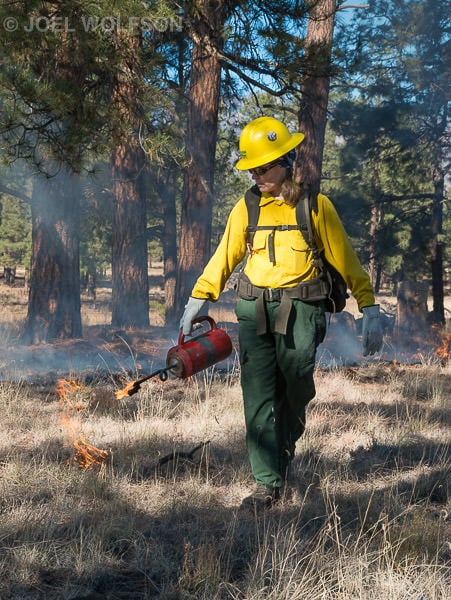
I live in the WUI (pronounced woo-ee). That stands for wildland-urban interface. The upside is I’m in the woods and mountains with beautiful views; surroundings that motivate me creatively, it’s quiet, and I see lots of wildlife. The downside is I’m in the woods, which means potential danger from wildland fires. Exacerbating that danger is that I also happen to be in northern Arizona, where wildland fires are not uncommon.
Scary Moments Can Motivate You
I’ve seen smoke plumes and hazy skies from forest fires many times but they are usually far off. However, a few years ago a young man, despondent over his girlfriend, decided to light a dozen fires in the forest near my house and studio. My wife happens to be a fire ecologist and although we were away at the time, one of her colleagues that manages a wildland fire crew called us to let us know there was a fire in our area. We drove home, got our dogs, and packed up a few irreplaceable items while coughing from smoke.
It sounded like we were in an air raid with planes flying right over our heads dropping fire retardant. Then the sheriff knocked on the door and told us to get out of there. We stayed at my mother’s house trying to get updates on the progress of the firefighters. Finally in the early evening we breathed a big sigh of relief when a neighbor called and said it was OK to come back to our homes.
Thankfully, the fire crews did a spectacular job safely containing the fires. There was no fire or smoke damage to our home or my studio and we were able to clean the fire retardant off of our house.
With the main fires out I walked into the woods to shoot photos of the remaining smoke, the remnant flames, and the remaining firefighters making sure everything remained under control.
After this experience I was ready for a prescribed burn of our property.
Shooting the Burn
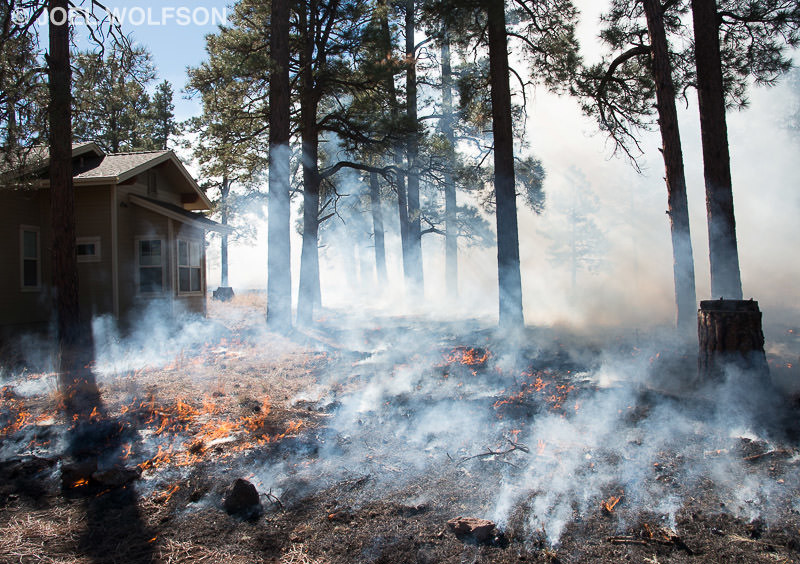
I knew I wanted to shoot this and tell the story. Although I asked lots of questions about it of my wife, the Burn Boss, and some of the crew, I didn’t fully know what to expect in terms of photo opportunities. I knew I would have to be able to move quickly during the burn so I didn’t want to be laden with too much gear and using a tripod was likely going to be out of the question.
I made sure to cover my bases with my full frame rig (Nikon D800E and Nikkor 24-120), and a Micro 4/3 for video and backup stills (Olympus OMD E-M1) along with my infrared body, also a Micro 4/3 (My old GH2 with IR modification), and an Olympus 12-40 f2.8 lens. I kept all 3 cameras on straps around my shoulders and neck so all were accessible. I also had a compact camera (Sony RX100 III) in my pocket. With all but the Nikon rig being compact and lightweight I was fairly unencumbered and able to move quickly.
I Was Blown Away by What Unfolded During the Burn, In a Good Way
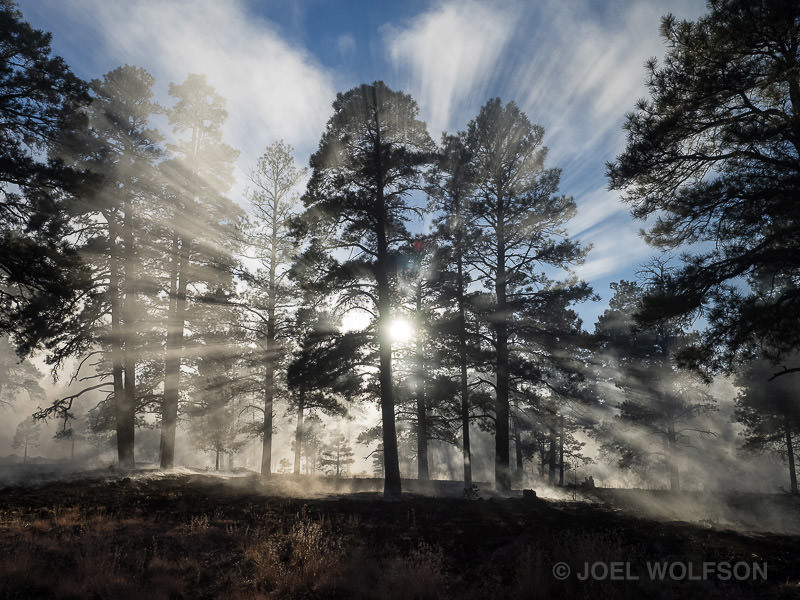
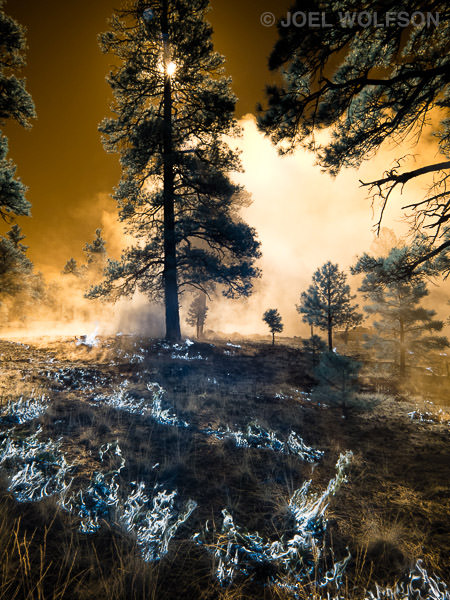
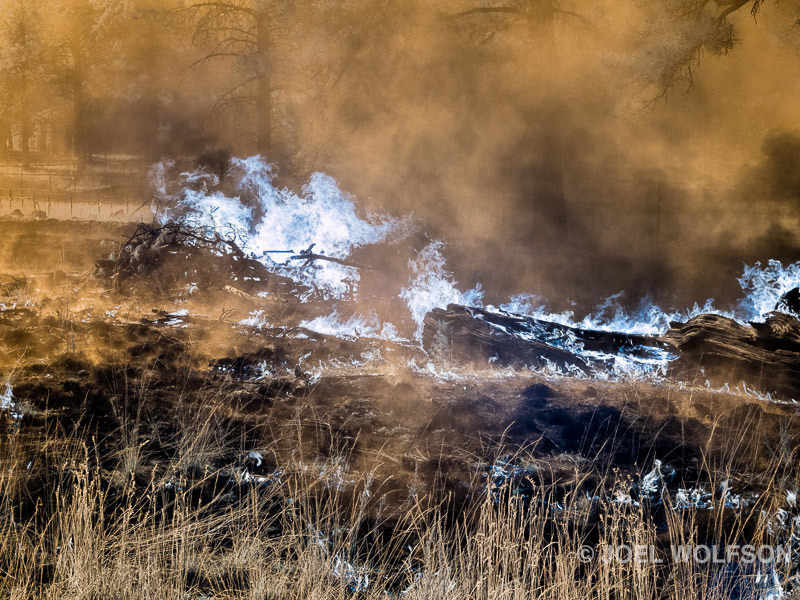
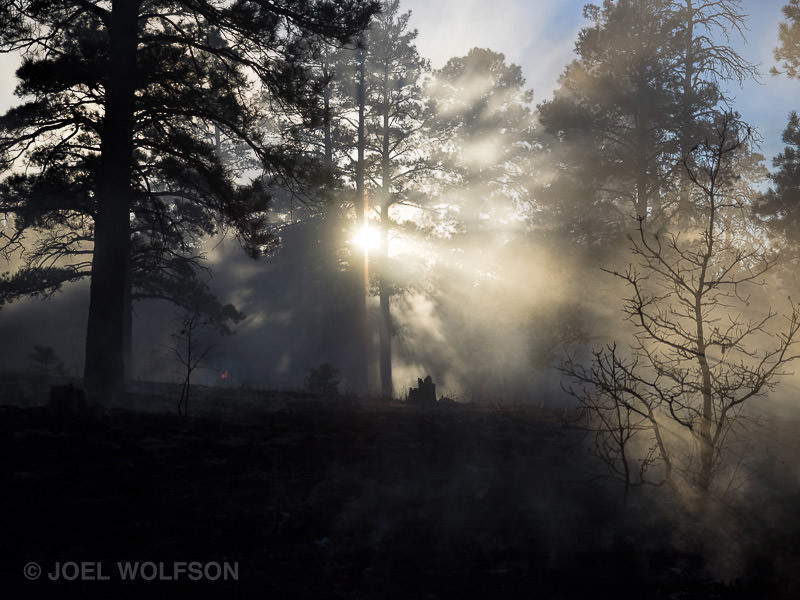
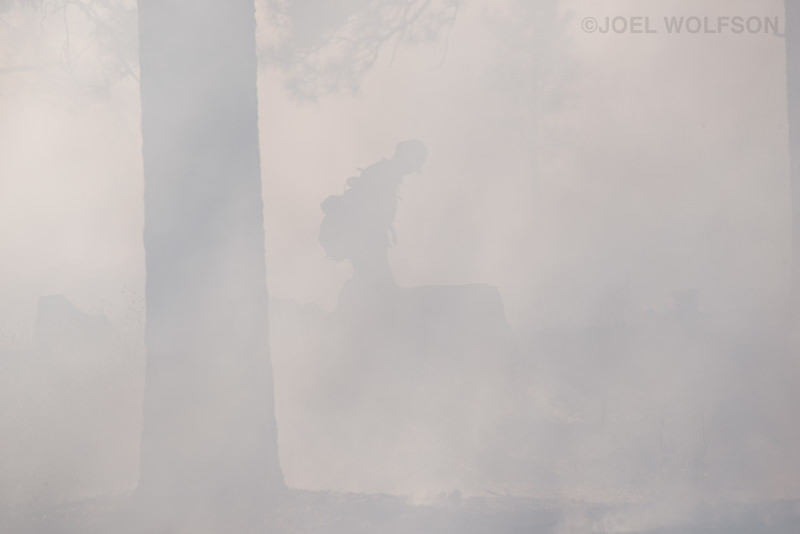
There happened to be a dense air mass that day that kept smoke close to the ground. Combined with the blue skies, trees, and the sun, it made for unique and magnificent lighting and wonderful effects from the smoke. I couldn’t have dreamed up anything like this. There were nature shots, firefighters, vehicles, all in a dreamscape. I wanted to be everywhere at once. Then when night fell, I had another set of opportunities.
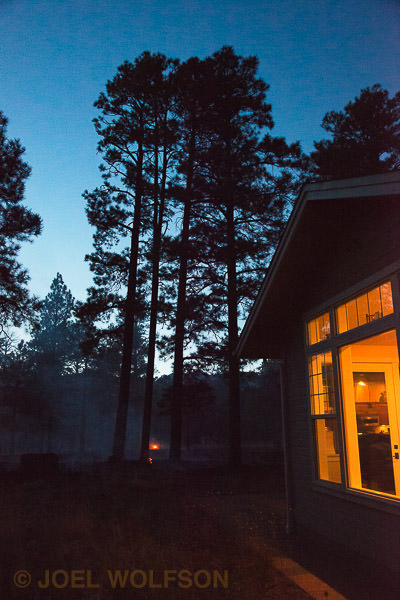
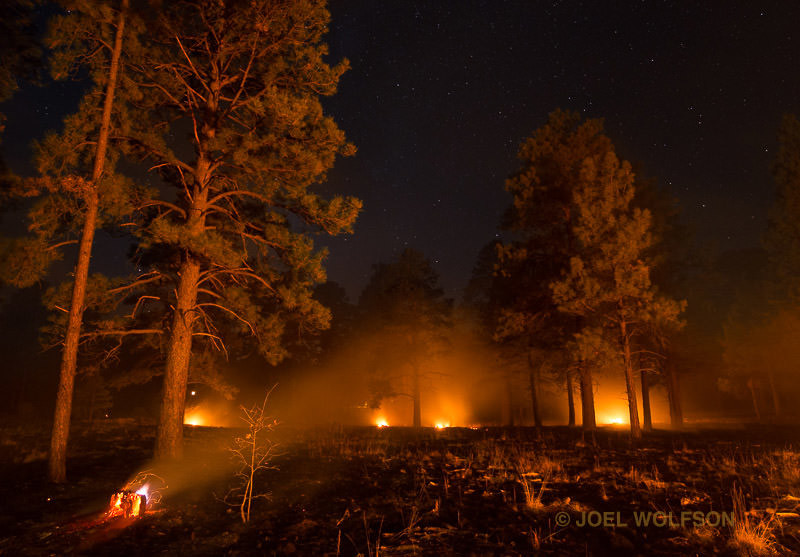
The next morning, amidst the smoldering charred ground that used to be my yard, I looked at my wife, the fire ecologist, and said “Wow, that’s a whole lot of black” She assured me that not only would green grass and flowers return but we’d have a much healthier forest with less potential fire hazard on our property.
Then my longer term project began: after the fire was out I ended up shooting all the blackness, then little green sprouts coming up through the ash and charred ground, the contrast of snow and blackened tree trunks, and the elk coming around for the nutrient rich regrowth. I ended up shooting this story through all four seasons spanning a year.
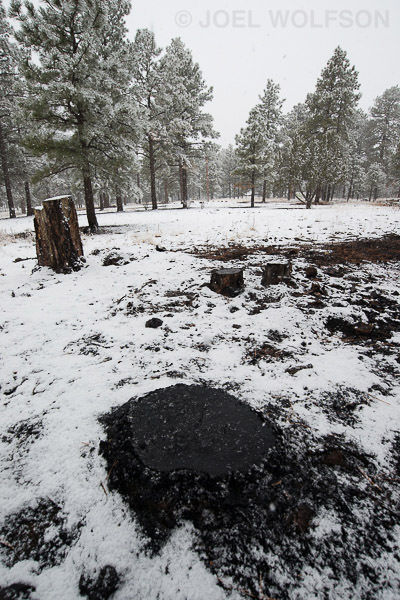
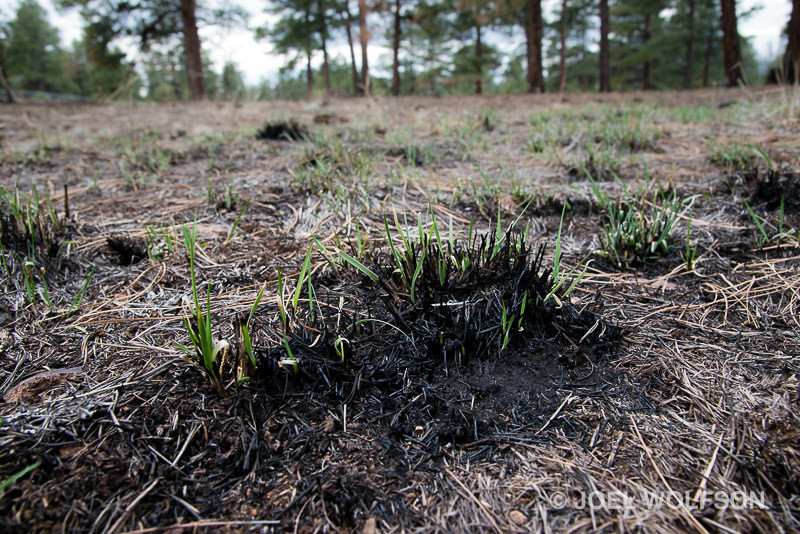
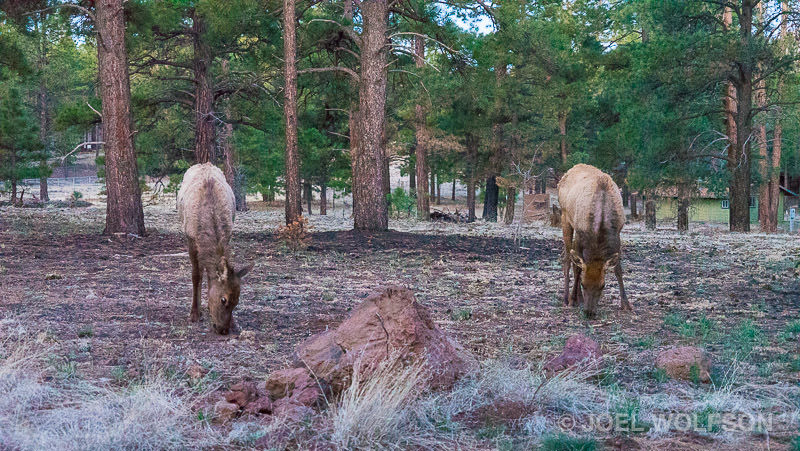
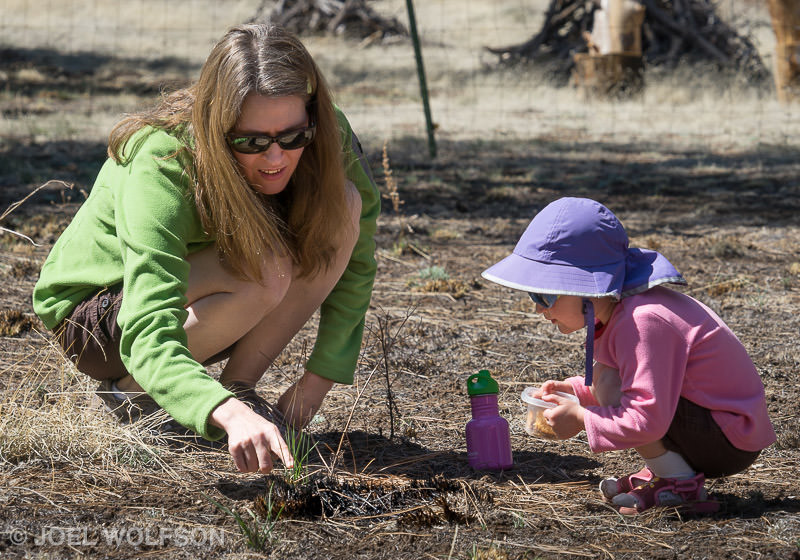
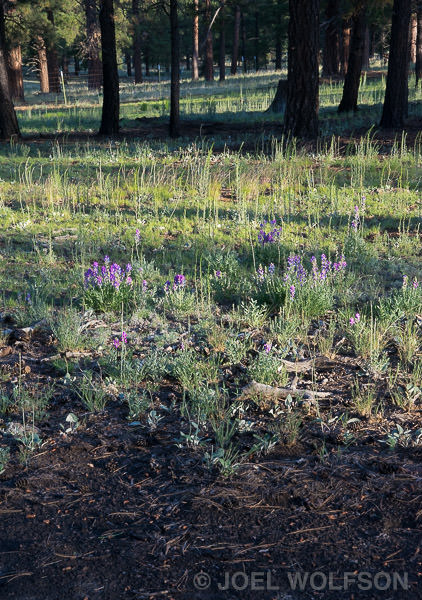
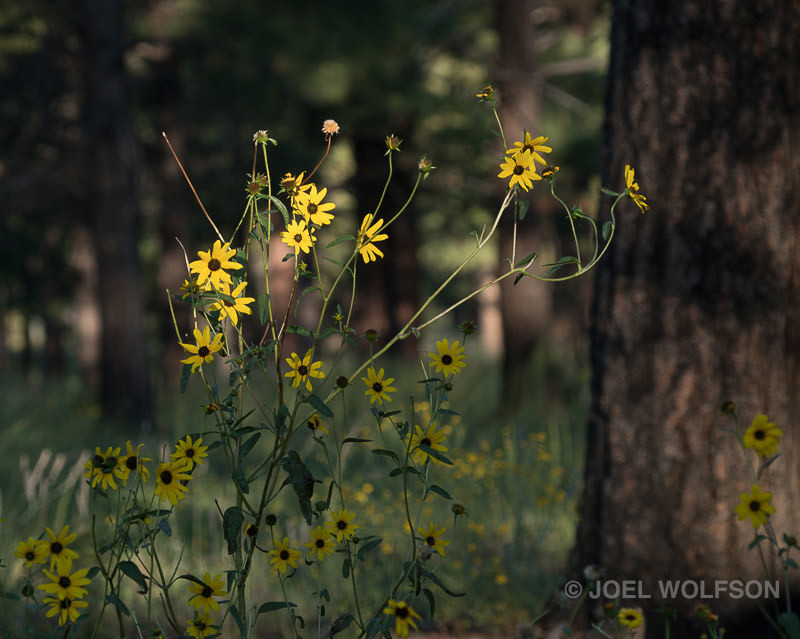
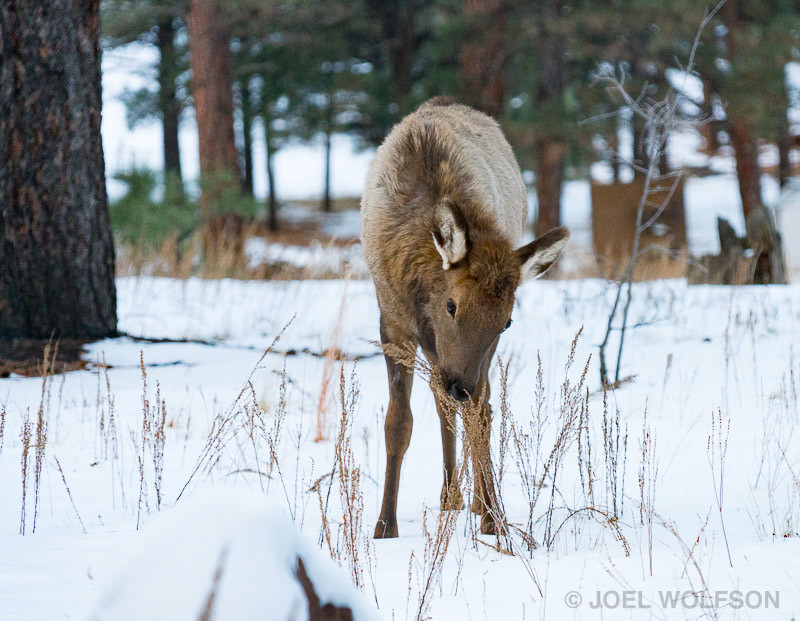
I’m not a wildland fire specialist but I was able to take advantage of a rare occasion as a photographer: the weather on the particular day we did the burn, a controlled environment with a fire crew and their equipment at hand, and a beautiful day in the forest, all came together for some amazing opportunities and an ensuing story with many photographic rewards.
About the author: Joel Wolfson is an internationally published photographer who loves teaching as much as shooting. He shares his 30 years of experience as a working pro with other photographers and enthusiasts by way of his workshops, 1 on 1 training, webinars, articles, blog and speaking engagements. He is one of the pioneers of digital photography, having conducted digital photography seminars for Apple and other corporations starting in the early 90s. This article was also published here.